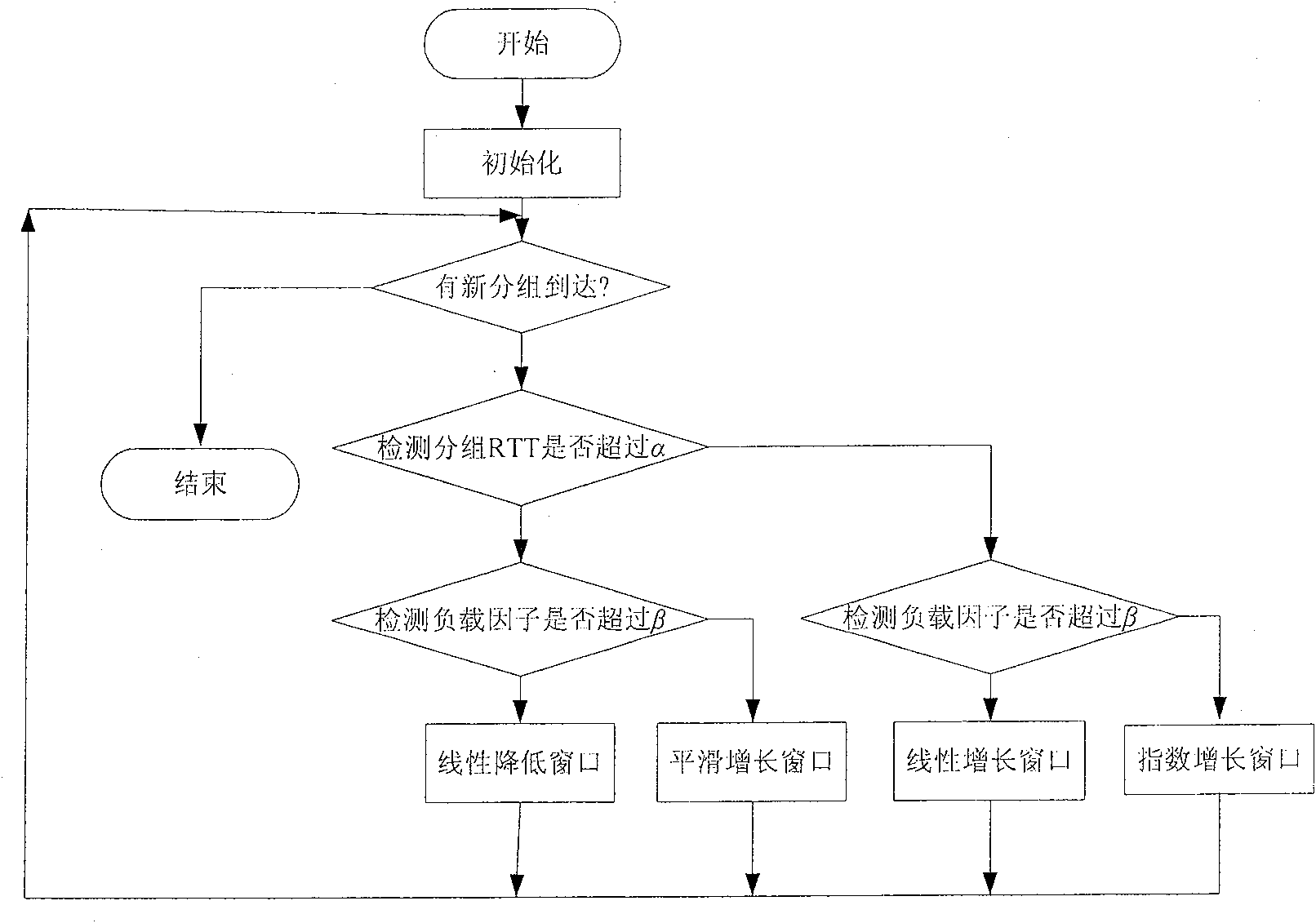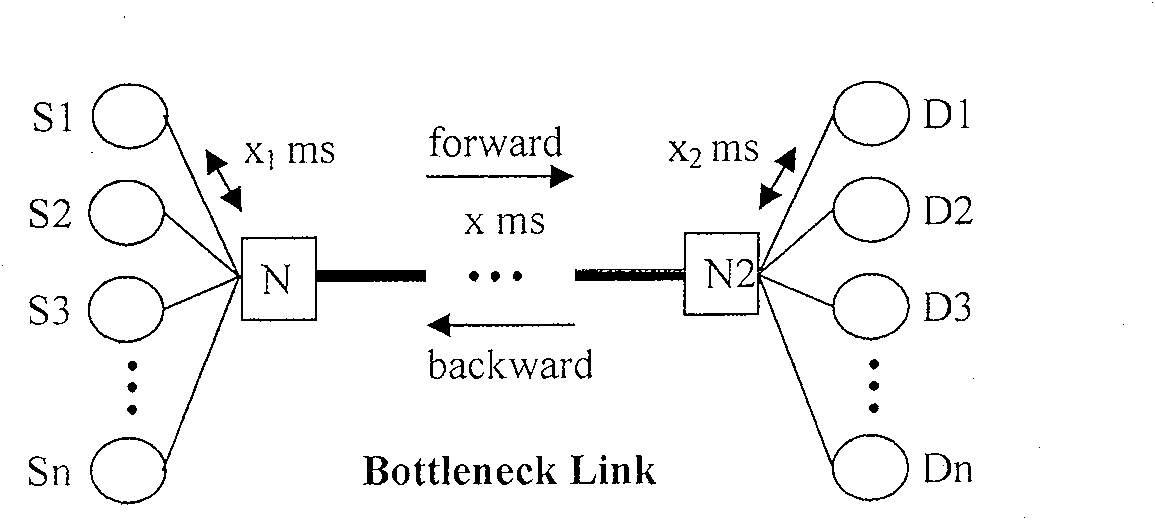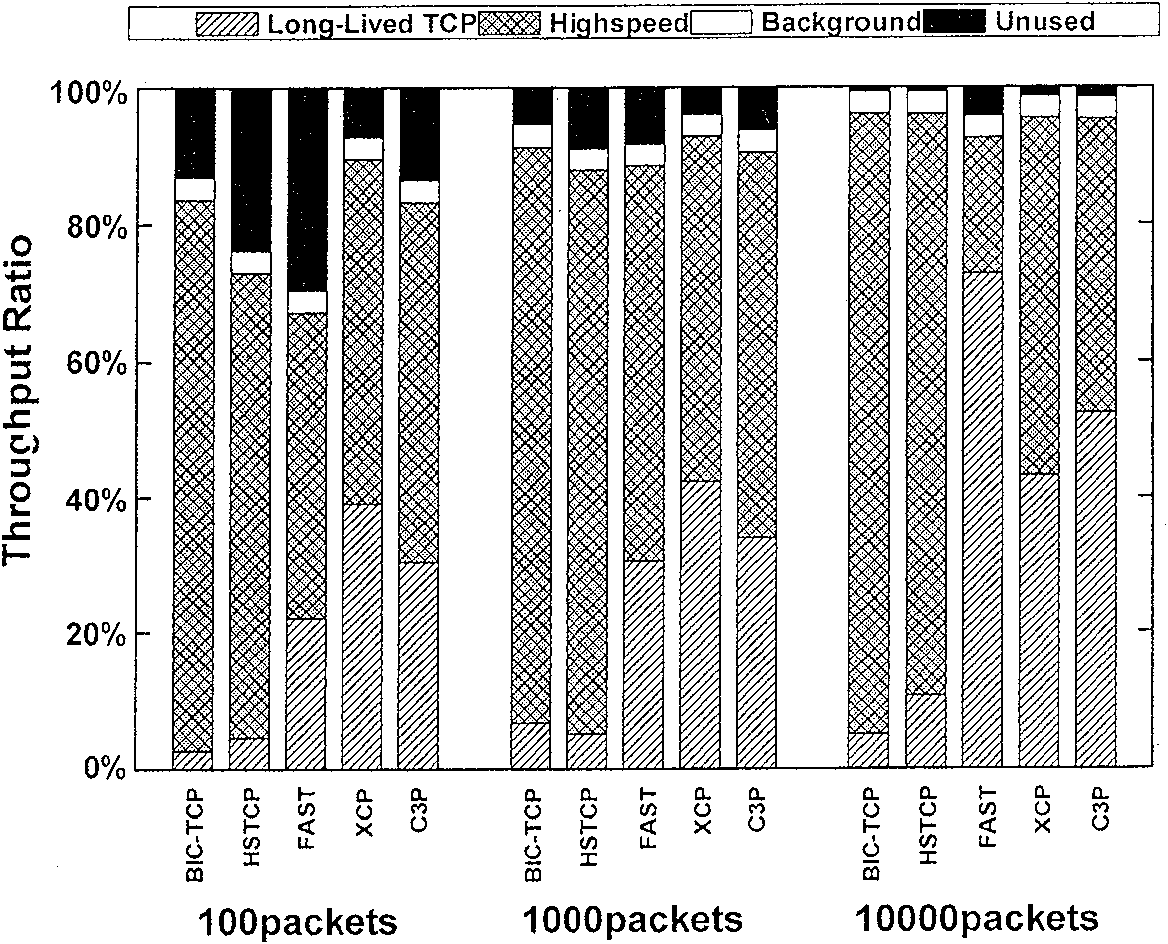A collaborative congestion control method for high-speed network
A high-speed network, collaborative work technology, applied in data exchange network, data exchange through path configuration, digital transmission system, etc., can solve the problems of preempting the available bandwidth of the bottleneck link, low throughput, serious RTT unfairness, etc. achieve the effect of reducing the direct impact
- Summary
- Abstract
- Description
- Claims
- Application Information
AI Technical Summary
Problems solved by technology
Method used
Image
Examples
Embodiment Construction
[0032] see figure 1 , a flowchart of the inventive method. First, we define the load factor prediction value LF of any node i on the network path in the next τ time slot i for:
[0033] LF i = r i C i - - - ( 1 )
[0034] Among them, r i Indicates the predicted value of the sum of the arrival rates of all incoming flows except this node, C i Indicates the service rate of the link (that is, the link bandwidth). And the network path P={1, 2, ..., i, ..., m} load factor LF of the next time slot P is the maximum value of predicted load factors of all nodes on the path, that is:
[0035] LF P = max { LF i | i ∈ P ...
PUM
 Login to View More
Login to View More Abstract
Description
Claims
Application Information
 Login to View More
Login to View More - R&D
- Intellectual Property
- Life Sciences
- Materials
- Tech Scout
- Unparalleled Data Quality
- Higher Quality Content
- 60% Fewer Hallucinations
Browse by: Latest US Patents, China's latest patents, Technical Efficacy Thesaurus, Application Domain, Technology Topic, Popular Technical Reports.
© 2025 PatSnap. All rights reserved.Legal|Privacy policy|Modern Slavery Act Transparency Statement|Sitemap|About US| Contact US: help@patsnap.com



